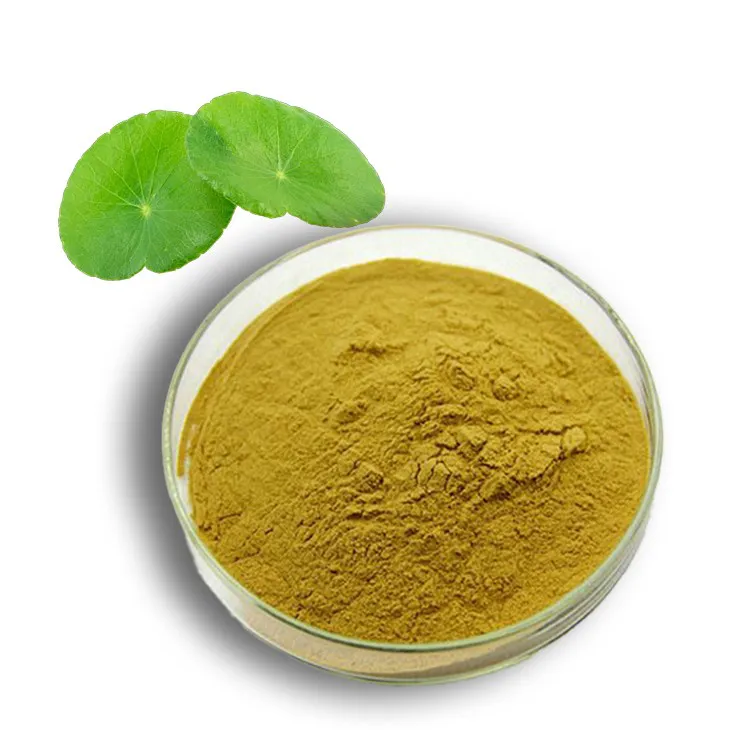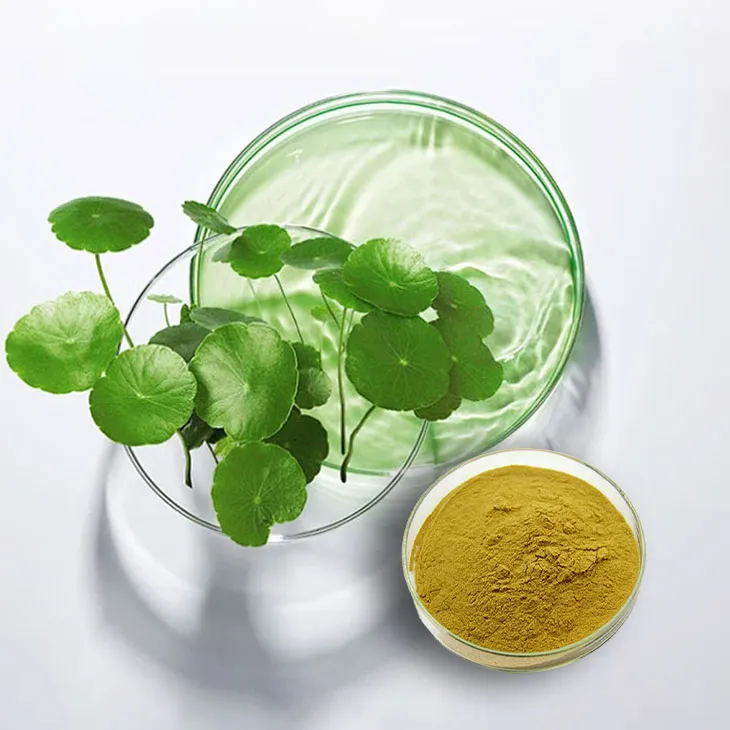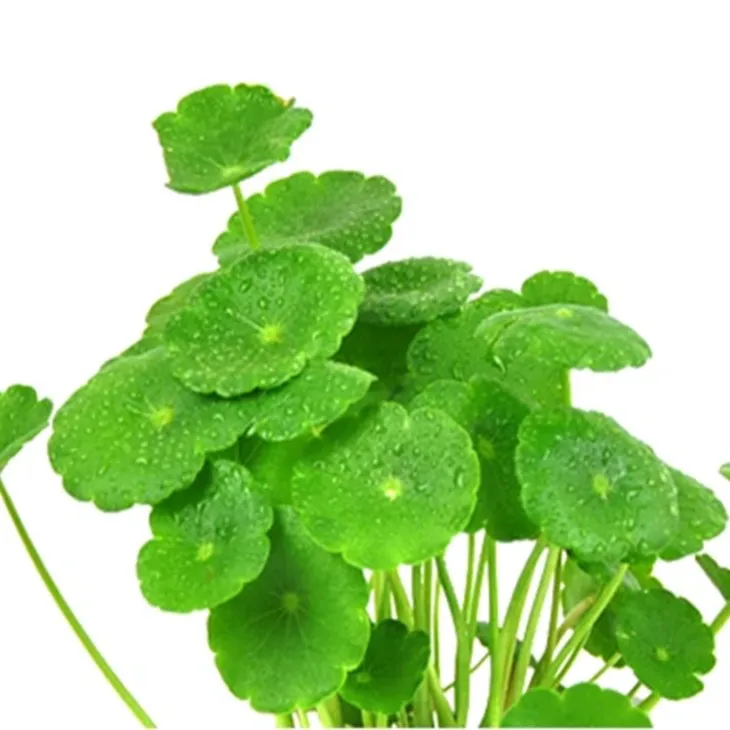- 0086-571-85302990
- sales@greenskybio.com
Centella asiatica extract can reduce high blood pressure.
2024-11-11

1. Introduction
Hypertension, or high blood pressure, is a major global health concern. It is a significant risk factor for various cardiovascular diseases, such as heart attacks, strokes, and heart failure. The traditional approach to managing hypertension often involves lifestyle modifications and the use of pharmaceutical drugs. However, there is a growing interest in exploring natural remedies, and Centella Asiatica Extract has emerged as a promising candidate in this regard.

2. Centella asiatica: An Overview
Centella asiatica, also known as Gotu kola, is a herbaceous plant native to Asia, Africa, and Australia. It has been used in traditional medicine for centuries to treat a variety of ailments, including skin diseases, wounds, and memory problems. The plant contains several bioactive compounds, such as triterpenoids (including asiaticoside, madecassoside, and asiatic acid), flavonoids, and phenolic acids, which are believed to be responsible for its therapeutic properties.

3. How Centella Asiatica Extract May Act on the Cardiovascular System
3.1 Vasodilation
One of the ways in which Centella Asiatica Extract may help lower blood pressure is through vasodilation. Vasodilation refers to the widening of blood vessels, which reduces the resistance to blood flow and, consequently, lowers blood pressure. The triterpenoids in Centella asiatica extract have been shown to stimulate the production of nitric oxide (NO) in endothelial cells. Nitric oxide is a powerful vasodilator that relaxes the smooth muscle cells in the blood vessel walls, allowing the vessels to dilate. For example, a study conducted on animal models found that treatment with Centella asiatica extract led to an increase in NO levels in the blood vessels, resulting in significant vasodilation.
3.2 Regulation of the Renin - Angiotensin - Aldosterone System (RAAS)
The RAAS plays a crucial role in blood pressure regulation. When blood pressure drops, the kidneys release renin, which initiates a cascade of reactions leading to the production of angiotensin II, a potent vasoconstrictor, and the release of aldosterone, which promotes sodium and water retention. Centella asiatica extract may interfere with the RAAS to lower blood pressure. Some research suggests that the extract can inhibit the activity of renin or block the receptors for angiotensin II. By doing so, it can prevent the vasoconstriction and sodium - water retention mechanisms associated with the RAAS, thereby reducing blood pressure.

4. Antioxidant and Anti - Inflammatory Properties Related to Blood Pressure Reduction
4.1 Antioxidant Activity
Oxidative stress is implicated in the development and progression of hypertension. Free radicals can damage endothelial cells, leading to impaired vasodilation and increased vascular resistance. Centella asiatica extract exhibits strong antioxidant activity due to its high content of phenolic compounds and flavonoids. These antioxidants can scavenge free radicals, protect endothelial cells from oxidative damage, and maintain the normal function of blood vessels. For instance, in vitro studies have demonstrated that the extract can effectively neutralize reactive oxygen species (ROS) and prevent lipid peroxidation in endothelial cells.
4.2 Anti - Inflammatory Effects
Chronic inflammation is also associated with hypertension. Inflammatory mediators can cause endothelial dysfunction and promote the development of atherosclerotic plaques in blood vessels. Centella asiatica extract has been shown to possess anti - inflammatory properties. It can inhibit the production of pro - inflammatory cytokines, such as interleukin - 6 (IL - 6) and tumor necrosis factor - alpha (TNF - α). By reducing inflammation in the blood vessels, the extract can improve endothelial function and contribute to blood pressure reduction.
5. Incorporating Centella asiatica Extract into a Holistic Approach for Hypertension Control
While Centella asiatica extract shows potential in reducing blood pressure, it should be incorporated into a holistic approach for hypertension control. This approach includes the following elements:
- Lifestyle Modifications
- Healthy diet: A diet rich in fruits, vegetables, whole grains, and low - fat dairy products can help lower blood pressure. Reducing sodium intake and increasing potassium intake are also important. For example, consuming foods like bananas, which are high in potassium, can counteract the effects of sodium on blood pressure.
- Regular exercise: Physical activity, such as brisk walking, jogging, or cycling for at least 150 minutes per week, can improve cardiovascular health and help manage blood pressure. Exercise helps strengthen the heart muscle and promotes vasodilation.
- Weight management: Maintaining a healthy body weight is crucial for blood pressure control. Losing excess weight, especially around the waist, can significantly reduce blood pressure.
- Stress reduction: High stress levels can contribute to hypertension. Techniques such as meditation, yoga, or deep breathing exercises can help reduce stress and its impact on blood pressure.
- Monitoring and Medication
- Regular blood pressure monitoring: Patients should regularly measure their blood pressure at home or have it checked by a healthcare provider. This helps in assessing the effectiveness of the treatment approach.
- Medication compliance: For some patients with severe hypertension, pharmaceutical drugs may still be necessary. It is important to take medications as prescribed and not to stop them without consulting a doctor.
- Use of Centella asiatica Extract
- Dosage and form: The appropriate dosage of Centella asiatica extract may vary depending on the individual and the preparation. It can be consumed in the form of capsules, tablets, or as a tea. However, it is important to consult a healthcare provider before starting any supplement.
- Quality and safety: Ensure that the Centella asiatica extract is obtained from a reliable source. There should be proper quality control measures in place to ensure its purity and safety.
6. Conclusion
In conclusion, Centella asiatica extract has shown promising potential in reducing high blood pressure through its effects on the cardiovascular system, antioxidant, and anti - inflammatory properties. However, more research is needed to fully understand its mechanisms of action and to establish its safety and efficacy in humans. Incorporating Centella asiatica extract into a holistic approach for hypertension control, along with lifestyle modifications and appropriate medical management, may offer a new avenue for the prevention and treatment of hypertension.
FAQ:
What is Centella asiatica extract?
Centella asiatica extract is derived from the Centella asiatica plant. It contains various bioactive compounds such as triterpenoids, which are thought to have potential health - benefiting effects, including those related to blood pressure regulation.
How does Centella asiatica extract reduce high blood pressure?
It may act on the cardiovascular system in multiple ways. Its antioxidant properties can help reduce oxidative stress in blood vessels, which is often associated with hypertension. The anti - inflammatory properties can also play a role by reducing inflammation in the vascular endothelium, improving endothelial function and thus contributing to a reduction in blood pressure.
Are there any side effects of using Centella asiatica extract for high blood pressure?
While generally considered safe, some people may experience mild side effects such as gastrointestinal discomfort. However, more research is needed to fully understand the potential side - effects, especially when used for an extended period or in large doses for blood pressure management.
Can Centella asiatica extract be used alone to treat high blood pressure?
It is not typically recommended to use it alone as a sole treatment for high blood pressure. Hypertension is a complex condition, and a holistic approach that includes lifestyle modifications (such as diet and exercise) and, in some cases, conventional medications is often more effective. Centella asiatica extract can potentially be incorporated as part of this comprehensive approach.
How long does it take for Centella asiatica extract to show an effect on blood pressure?
The time it takes to show an effect can vary from person to person. Some individuals may notice a difference in a few weeks, while for others it may take longer. This depends on factors such as the individual's overall health, the severity of their hypertension, and other concurrent treatments or lifestyle factors.
Related literature
- The Effects of Centella asiatica on Cardiovascular Health: A Review"
- "Centella asiatica Extract: Potential in Hypertension Management"
- "Antioxidant and Anti - Inflammatory Properties of Centella asiatica in Relation to Blood Pressure"
- ▶ Hesperidin
- ▶ citrus bioflavonoids
- ▶ plant extract
- ▶ lycopene
- ▶ Diosmin
- ▶ Grape seed extract
- ▶ Sea buckthorn Juice Powder
- ▶ Beetroot powder
- ▶ Hops Extract
- ▶ Artichoke Extract
- ▶ Reishi mushroom extract
- ▶ Astaxanthin
- ▶ Green Tea Extract
- ▶ Curcumin Extract
- ▶ Horse Chestnut Extract
- ▶ Other Problems
- ▶ Boswellia Serrata Extract
- ▶ Resveratrol Extract
- ▶ Marigold Extract
- ▶ Grape Leaf Extract
- ▶ blog3
-
High purity olive leaf extract
2024-11-11
-
Lavender oil extraction method
2024-11-11
-
100% organic virgin sea buckthorn fruit oil
2024-11-11
-
Lotus leaf extract powder factory in China
2024-11-11
-
China aged garlic extract supplier
2024-11-11
-
Deer antler extract powder manufacturer
2024-11-11
-
Saw palmetto extract vs whole herb
2024-11-11
-
Black Rice Extract
2024-11-11
-
Feverfew Extract
2024-11-11
-
Lycopene
2024-11-11
-
Purple Sweet Potato Extract
2024-11-11
-
Cranberry Extract
2024-11-11
-
Acai Berry Extract
2024-11-11
-
Artichoke Extract
2024-11-11
-
Beta Carotene
2024-11-11
-
Panax Ginseng Leaf Extract
2024-11-11
-
Pine bark Extract Powder
2024-11-11





















